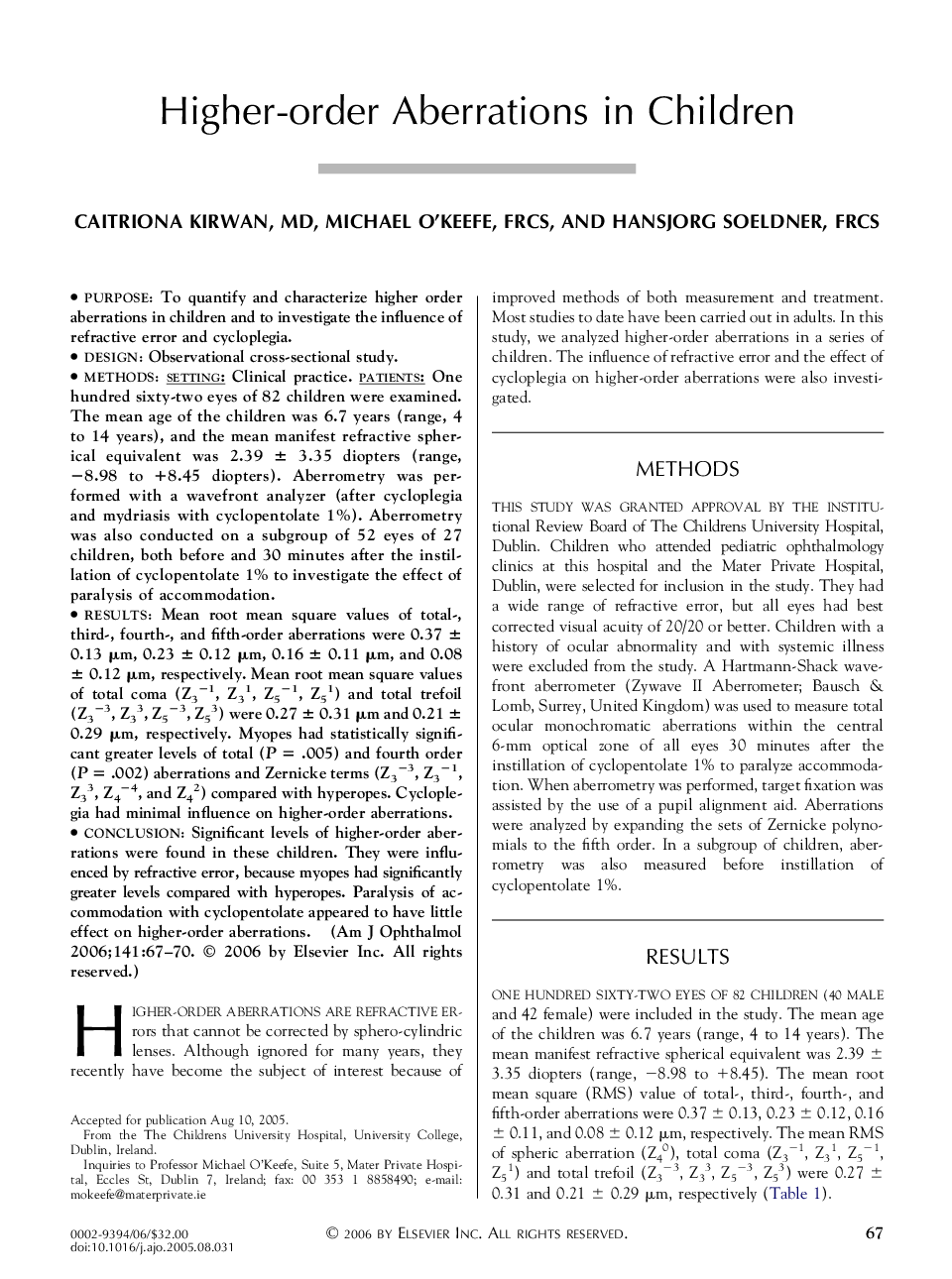| Article ID | Journal | Published Year | Pages | File Type |
|---|---|---|---|---|
| 4006263 | American Journal of Ophthalmology | 2006 | 4 Pages |
PurposeTo quantify and characterize higher order aberrations in children and to investigate the influence of refractive error and cycloplegia.DesignObservational cross-sectional study.Methodssetting: Clinical practice. patients: One hundred sixty-two eyes of 82 children were examined. The mean age of the children was 6.7 years (range, 4 to 14 years), and the mean manifest refractive spherical equivalent was 2.39 ± 3.35 diopters (range, −8.98 to +8.45 diopters). Aberrometry was performed with a wavefront analyzer (after cycloplegia and mydriasis with cyclopentolate 1%). Aberrometry was also conducted on a subgroup of 52 eyes of 27 children, both before and 30 minutes after the instillation of cyclopentolate 1% to investigate the effect of paralysis of accommodation.ResultsMean root mean square values of total-, third-, fourth-, and fifth-order aberrations were 0.37 ± 0.13 μm, 0.23 ± 0.12 μm, 0.16 ± 0.11 μm, and 0.08 ± 0.12 μm, respectively. Mean root mean square values of total coma (Z3−1, Z31, Z5−1, Z51) and total trefoil (Z3−3, Z33, Z5−3, Z53) were 0.27 ± 0.31 μm and 0.21 ± 0.29 μm, respectively. Myopes had statistically significant greater levels of total (P = .005) and fourth order (P = .002) aberrations and Zernicke terms (Z3−3, Z3−1, Z33, Z4−4, and Z42) compared with hyperopes. Cycloplegia had minimal influence on higher-order aberrations.ConclusionSignificant levels of higher-order aberrations were found in these children. They were influenced by refractive error, because myopes had significantly greater levels compared with hyperopes. Paralysis of accommodation with cyclopentolate appeared to have little effect on higher-order aberrations.
